Assessment of Renewable Sources for the Energy Consumption in Malta in the Mediterranean Sea
Abstract
:1. Introduction
2. Maltese Archipelago
3. Electrical Energy Production in Malta
4. Sea Wave Energy Resource
5. DEIM Point Absorber
6. Energetic Scenario Based on Wave and Photovoltaic Farms
7. Conclusions
Author Contributions
Conflicts of Interest
Nomenclature
| Significant wave height (m) | |
| Energy period (s) | |
| Wave energetic flux rate (kW/m) | |
| Average wave energetic flux rate (kW/m) | |
| Sea water density (kg/m3) | |
| Gravitational acceleration (m/s2) | |
| Buoy external diameter (m) | |
| Rated power of wave converter (kW) | |
| Average overall energetic efficiency of wave converter (%) | |
| Number of buoys per wave farm (-) | |
| Number of wave farms (-) | |
| Overall installed power of wave farms (MW) | |
| Annual energy production by sea wave (MW/year) | |
| Hours per year (h/year) | |
| Daily solar radiation (kWh/m2) | |
| Monthly solar radiation (kWh/m2) | |
| Annual solar radiation (kWh/m2) | |
| Standard solar radiation (kWh/m2) | |
| Panel efficiency (%) | |
| Panel surface per buoy (m2) | |
| Overall installed power of photovoltaic panels (MW) | |
| Annual energy production by photovoltaic panels (MWh/year) | |
| CO2 emission factor (t CO2/MWh) | |
| Avoided CO2 emission by sea wave farm (t CO2/year) | |
| Avoided CO2 emission by solar farm (t CO2/year) | |
| Total avoided CO2 emission by sea wave and solar sources (t CO2/year) |
References
- Di Dio, V.; Franzitta, V.; Milone, D.; Pitruzzella, S.; Trapanese, M.; Viola, A. Design of Bilateral Switched Reluctance Linear Generator to Convert Wave Energy: Case Study in Sicily. Adv. Mater. Res. 2013, 860–863, 1694–1698. [Google Scholar] [CrossRef]
- Franzitta, V.; Milone, A.; Milone, D.; Trapanese, M.; Viola, A. A Procedure to Evaluate the Indoor Global Quality by a Sub Objective-Objective Procedure. Adv. Mater. Res. 2013, 734–737, 3065–3070. [Google Scholar] [CrossRef]
- Antoine, B.; Goran, K.; Neven, D. Energy scenarios for Malta. Int. J. Hydrogen Energy 2008, 33, 4235–4246. [Google Scholar] [CrossRef]
- Franzitta, V.; Milone, D.; Trapanese, M.; Viola, A.; di Dio, V.; Pitruzzella, S. Energy and Economic Comparison of Different Conditioning System among Traditional and Eco-Sustainable Building. Appl. Mech. Mater. 2013, 394, 289–295. [Google Scholar] [CrossRef]
- Franzitta, V.; Trapanese, M.; Giaconia, C.; Ferrara, P.; Viola, A. Design and experimental test of a low costweather buoy. In Proceedings of the 2013 MTS/IEEE OCEANS—Bergen, Bergen, Norway, 10–14 June 2013; pp. 1–5.
- Franzitta, V.; Milone, A.; Milone, D.; Pitruzzella, S.; Trapanese, M.; Viola, A. Experimental Evidence on the Thermal Performance of Opaque Surfaces in Mediterranean Climate. Adv. Mater. Res. 2013, 860–863, 1227–1231. [Google Scholar] [CrossRef]
- The European Parliament and of the Council. Directive 2009/28/EC of the European Parliament and of the Council of 23 April 2009 on the promotion of the use of energy from renewable sources and amending and subsequently repealing Directives 2001/77/EC and 2003/30/EC. Off. J. Eur. Union L 2009, 140, 16–62. [Google Scholar]
- Milone, D.; Pitruzzella, S.; Franzitta, V.; Viola, A.; Trapanese, M. Energy Savings through Integration of the Illumination Natural and Artificial, Using a System of Automatic Dimming: Case Study. Appl. Mech. Mater. 2013, 372, 253–258. [Google Scholar] [CrossRef]
- Franzitta, V.; Milone, A.; Milone, D.; Pitruzzella, S.; Trapanese, M.; Viola, A. A Case Study to Evaluate the Indoor Global Quality. Adv. Mater. Res. 2013, 864–867, 1054–1058. [Google Scholar] [CrossRef]
- Trapanese, M.; Franzitta, V.; Viola, A. The Jiles Atherton model for description of hysteresis in lithium battery. In Proceedings of the 2013 Twenty-Eighth Annual IEEE Applied Power Electronics Conference and Exposition (APEC), Long Beach, CA, USA, 17–21 March 2013; pp. 2773–2775.
- Trapanese, M.; Franzitta, V.; Viola, A. Description of hysteresis of Nickel Metal Hydride Battery. In Proceedings of the IECON 2012—38th Annual Conference on IEEE Industrial Electronics Society, Montreal, QC, Canada, 25–28 October 2012; pp. 967–970.
- Falcão, A.F.D.O. Wave energy utilization: A review of the technologies. Renew. Sustain. Energy Rev. 2010, 14, 899–918. [Google Scholar] [CrossRef]
- Viola, A.; Franzitta, V.; Curto, D.; Trapanese, M.; di Dio, V.; Cipriani, G.; Boscaino, V.; Corpora, M.; Raimondi, F.M. Design of wave energy converter (WEC): A prototype installed in Sicily. In Proceedings of the OCEANS 2015—Genoa, Genoa, Italy, 18–21 May 2015; pp. 1–5.
- Galdies, C. The Climate of Malta: Statistics, Trends and Analysis 1951–2010; National Statistics Office: Valletta, Malta, 2011. [Google Scholar]
- Weather and Climate in Malta and Gozo. Available online: http://www.malta.com/en/about-malta/weather-climate (accessed on 20 October 2016).
- Directorate General for Energy and Transport. Available online: http://ec.europa.eu/info/publications/directorate-general-mobility-and-transport_en (accessed on 23 September 2016).
- EneMalta Plc. Enemalta. Available online: http://www.enemalta.com.mt/ (accessed on 18 November 2016).
- Renewable Energy Scenarios in Islands (RESI). RESI Map. Available online: http://www.resiproject.eu/site/map/ (accessed on 20 October 2016).
- International Energy Agency (IEA). Malta. Available online: https://www.iea.org/countries/non-membercountries/malta/ (accessed on 20 October 2016).
- Modelling Malta’s Energy System towards Sustainability. Available online: http://projekter.aau.dk/projekter/files/213313567/Modelling_Malta_Energy_System_Breuer_Pilla.pdf (accessed on 23 September 2016).
- Trapani, K.; Millar, D.L. Proposing offshore photovoltaic (PV) technology to the energy mix of the Maltese islands. Energy Convers. Manag. 2013, 67, 18–26. [Google Scholar] [CrossRef]
- Iglesias, G.; Carballo, R. Wave energy and nearshore hot spots: The case of the SE Bay of Biscay. Renew. Energy 2010, 35, 2490–2500. [Google Scholar] [CrossRef]
- Guillou, N.; Chapalain, G. Numerical modelling of nearshore wave energy resource in the Sea of Iroise. Renew. Energy 2015, 83, 942–953. [Google Scholar] [CrossRef]
- Vicinanza, D.; Cappietti, L.; Ferrante, V.; Contestabile, P. Estimation of the wave energy in the Italian offshore. J. Coast. Res. 2011, 64, 613–617. [Google Scholar]
- Besio, G.; Mentaschi, L.; Mazzino, A. Wave energy resource assessment in the Mediterranean Sea on the basis of a 35-year hindcast. Energy 2016, 94, 50–63. [Google Scholar] [CrossRef]
- Vicinanza, D.; Contestabile, P.; Ferrante, V. Wave energy potential in the north-west of Sardinia (Italy). Renew. Energy 2013, 50, 506–521. [Google Scholar] [CrossRef]
- Sorensen, H.C.; Chozas, J.F. The Potential for Wave Energy in the North Sea. In Proceedings of the 3rd International Conference and Exhibition on Ocean Energy, ICOE—2010, Bilbao, Spain, 6–8 October 2010; pp. 1–6.
- Colucci, A.; Boscaino, V.; Cipriani, G.; Curto, D.; di Dio, V.; Franzitta, V.; Trapanese, M.; Viola, A. An inertial system for the production of electricity and hydrogen from sea wave energy. In Proceedings of the Ocean 2015—MTS/IEEE Washington, Washington, DC, USA, 19–22 October 2015; pp. 1–10.
- Drago, A.; Azzopardi, J.; Gauci, A.; Tarasova, R.; Bruschi, A. Assessing the Offshore Wave Energy Potential for the Maltese Islands. In Proceedings of the ISE Annual Conference 2013, Qawra, Malta, 21 March 2013; pp. 16–27.
- Trapanese, M.; Franzitta, V.; Viola, A. A dynamic model for hysteresis in magnetostrictive devices. J. Appl. Phys. 2014, 115, 1–4. [Google Scholar] [CrossRef]
- Franzitta, V.; Viola, A.; Trapanese, M. Design of a transverse flux machine for power generation from seawaves. J. Appl. Phys. 2014, 115, 17E712. [Google Scholar] [CrossRef]
- Marvuglia, A.; Messineo, A. Using Recurrent Artificial Neural Networks to Forecast Household Electricity Consumption. Energy Procedia 2012, 14, 45–55. [Google Scholar] [CrossRef]
- Volpe, R.; Messineo, A.; Millan, M.; Volpe, M.; Kandiyoti, R. Assessment of olive wastes as energy source: Pyrolysis, torrefaction and the key role of H loss in thermal breakdown. Energy 2015, 82, 119–127. [Google Scholar] [CrossRef]
- Asdrubali, F.; Presciutti, A.; Scrucca, F. Development of a greenhouse gas accounting GIS-based tool to support local policy making—Application to an Italian municipality. Energy Policy 2013, 61, 587–594. [Google Scholar] [CrossRef]
- Asdrubali, F.; Moncada, L.G.G.; Rotili, A. Influence of new factors on global energy prospects in the medium term: Comparison among the 2010, 2011 and 2012 editions of the IEA’s World Energy Outlook reports. Econ. Policy Energy Environ. 2013, 3, 67–89. [Google Scholar]
- McCullen, P.; Clement, A.; Falcao, A.; Fiorentino, A.; Gardner, F.; Hammarlund, K.; Lemonis, G.; Lewis, T.; Nielsen, K.; Petroncini, S.; et al. Wave energy in Europe: Current status and perspectives. Renew. Sustain. Energy. Rev. 2002, 6, 405–431. [Google Scholar]
- Curto, D. Ottimizzazione delle Performances Energetiche di un Innovativo Generatore di Energia Elettrica da Moto Ondoso; Gruppo Editoriale L’Espresso: Rome, Italy, 2015. [Google Scholar]
- Asdrubali, F.; D’Alessandro, F.; Baldinelli, G.; Bianchi, F. Evaluating in situ thermal transmittance of green buildings masonries—A case study. Case Stud. Constr. Mater. 2014, 1, 53–59. [Google Scholar] [CrossRef]
- Viola, A.; Franzitta, V.; Curto, D.; di Dio, V.; Milone, D.; Rodono, G. Environmental Impact Assessment (EIA) of Wave Energy Converter (WEC). In Proceedings of the OCEANS 2015—Genoa, Genoa, Italy, 18–21 May 2015; pp. 1–4.
- National Allocation Plan for Malta 2005–2007. Available online: http://mra.org.mt/wp-content/uploads/2012/09/bk1.doc-5_MALTA-NAP-2005_2007_FINAL.pdf (accessed on 23 September 2016).
- Balitsky, P.; Bacelli, G.; Ringwood, J.V. Control-Influenced Layout Optimization of Arrays of Wave Energy Converters. Ocean Renew. Energy 2014, 9B, V09BT09A022. [Google Scholar]
- Farrugia, R.N.; Fsadni, M.; Yousif, C.; Mallia, E.A. The Renewable Energy Potential of the Maltese Islands. Xjenza 2005, 10, 32–42. [Google Scholar]
- Yousif, C.; Quecedo, G.O.; Santos, J.B. Comparison of solar radiation in Marsaxlokk, Malta and Valladolid, Spain. Renew. Energy 2013, 49, 203–206. [Google Scholar] [CrossRef]
- Efficient Energy Saving. Solar Irradiance Calculator. Available online: http://www.efficientenergysaving.co.uk/solar-irradiance-calculator.html (accessed on 07 November 2016).
- Ciabattoni, L.; Grisostomi, M.; Ippoliti, G.; Longhi, S. Fuzzy logic home energy consumption modeling for residential photovoltaic plant sizing in the new Italian scenario. Energy 2014, 74, 359–367. [Google Scholar] [CrossRef]
- National Allocation Plan for Malta 2008–2012. Available online: http://mra.org.mt/wp-content/uploads/2012/09/bk2.doc-6_REVISED-MALTA-NAP-2008_2012_FINAL.pdf (accessed on 07 November 2016).

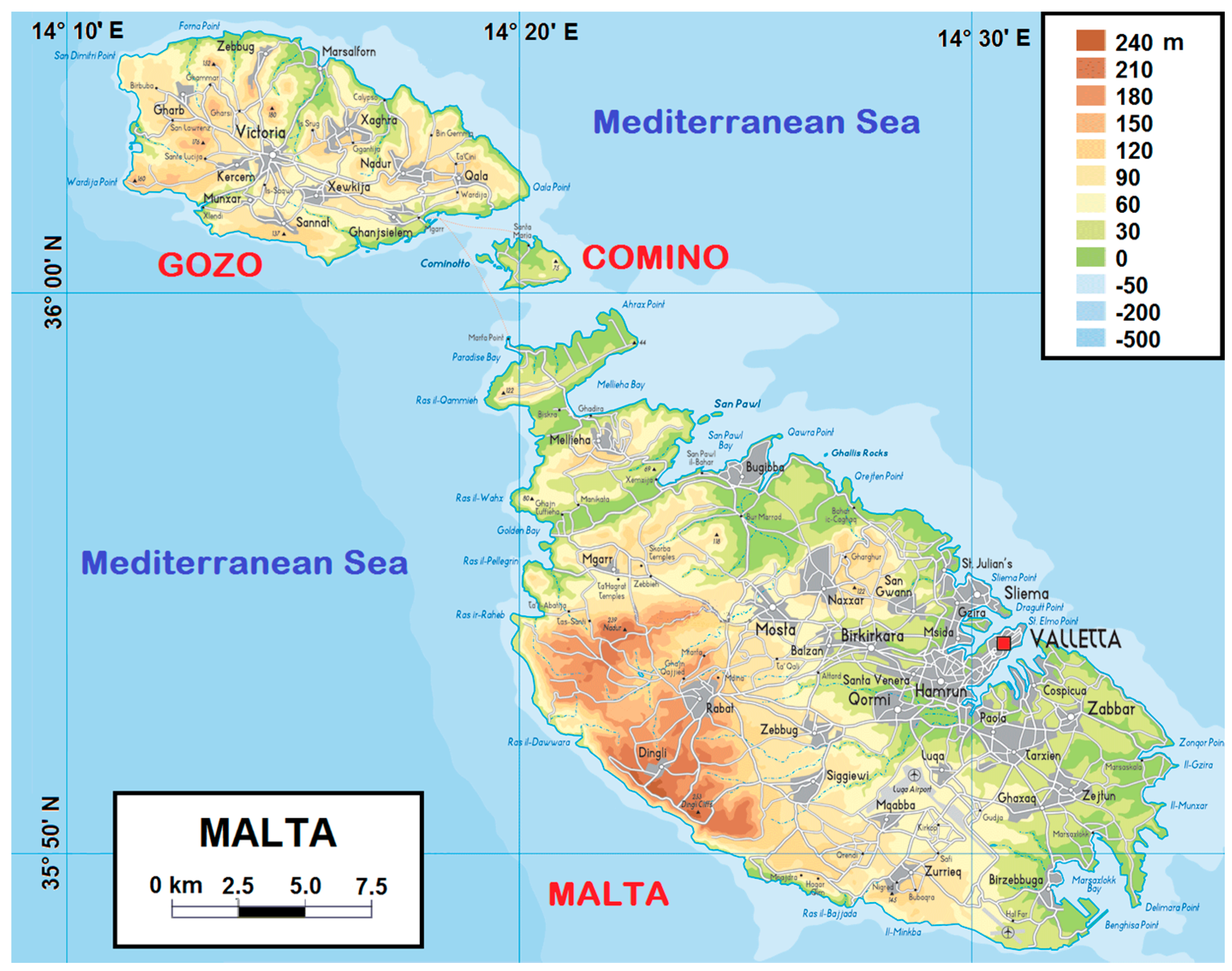
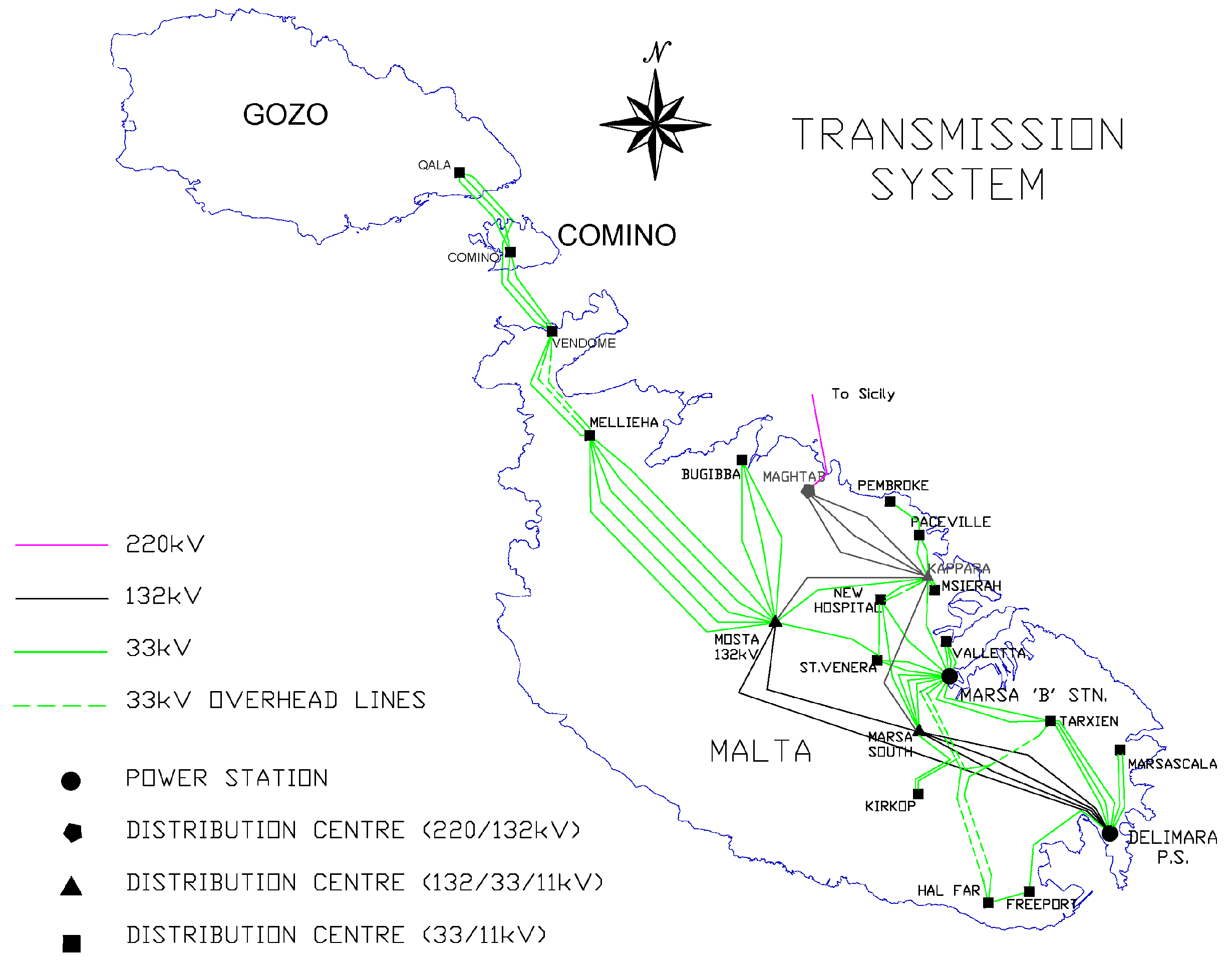
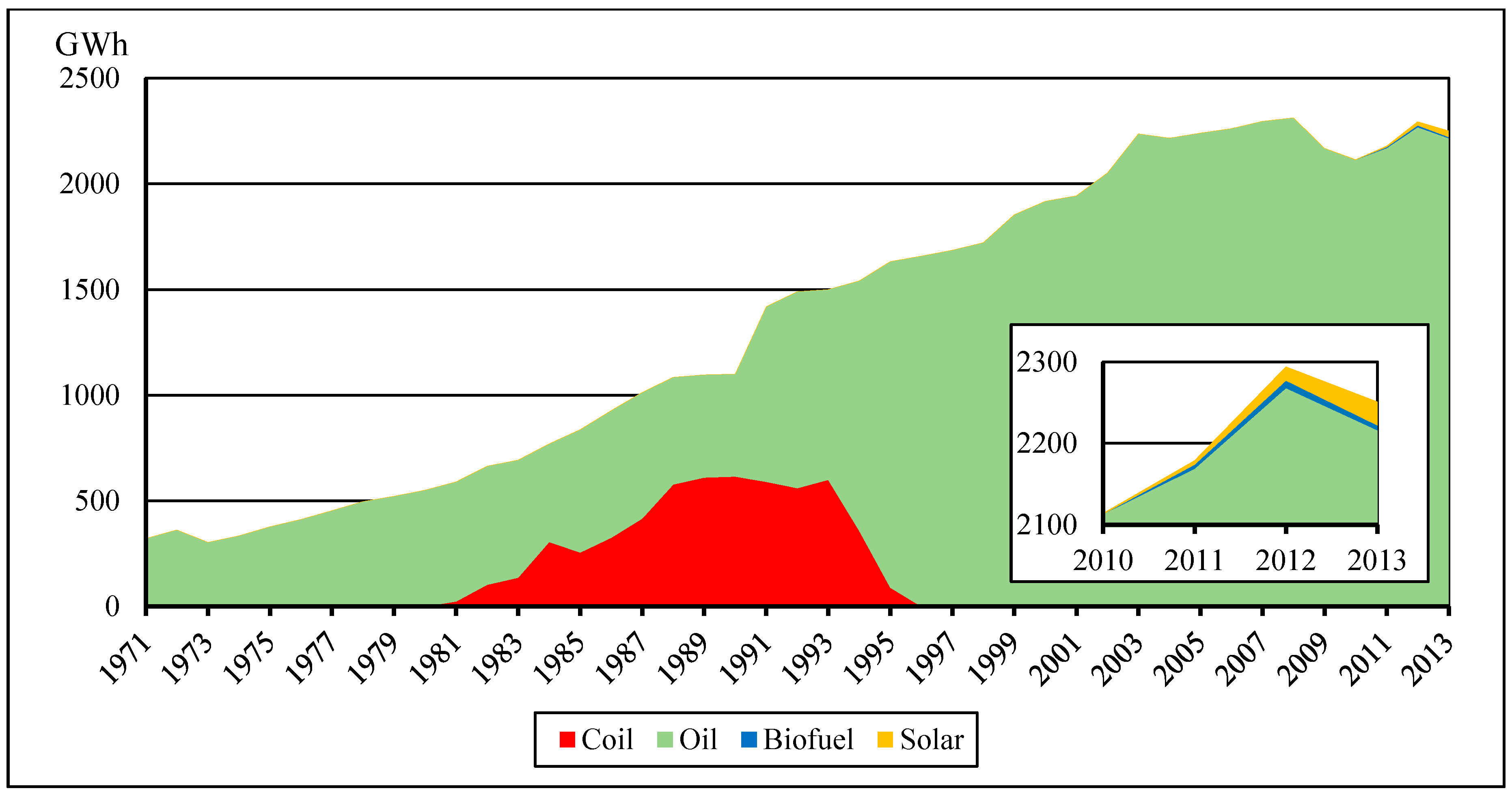
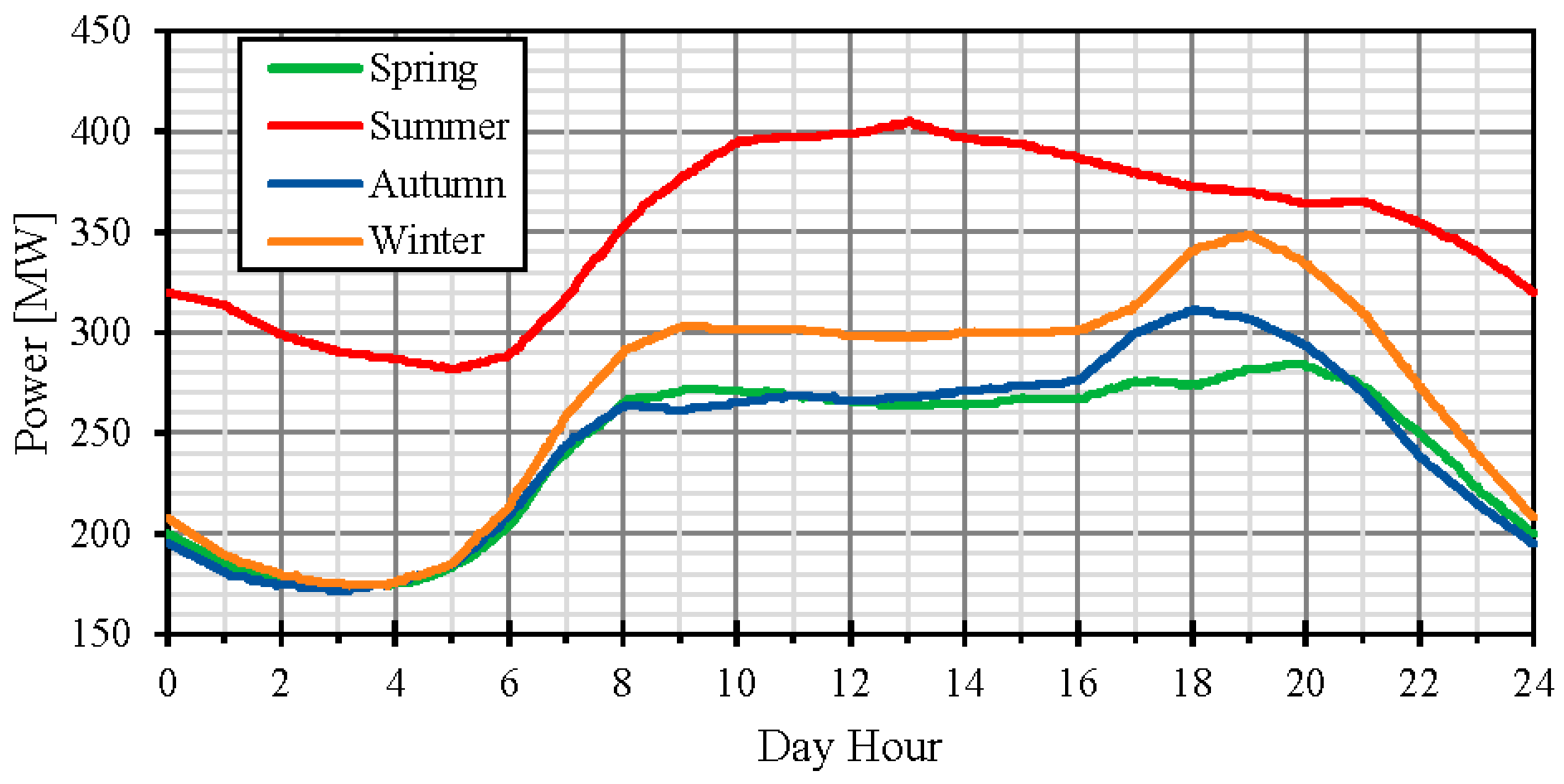
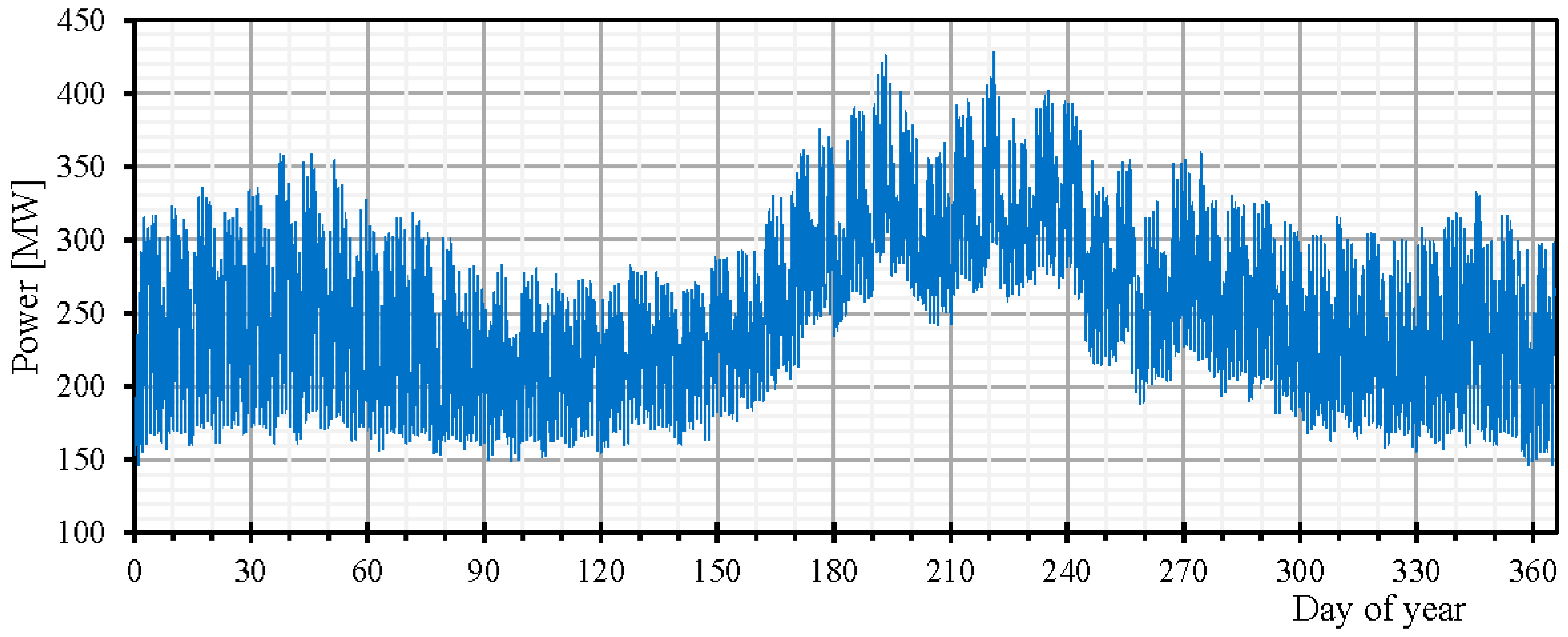
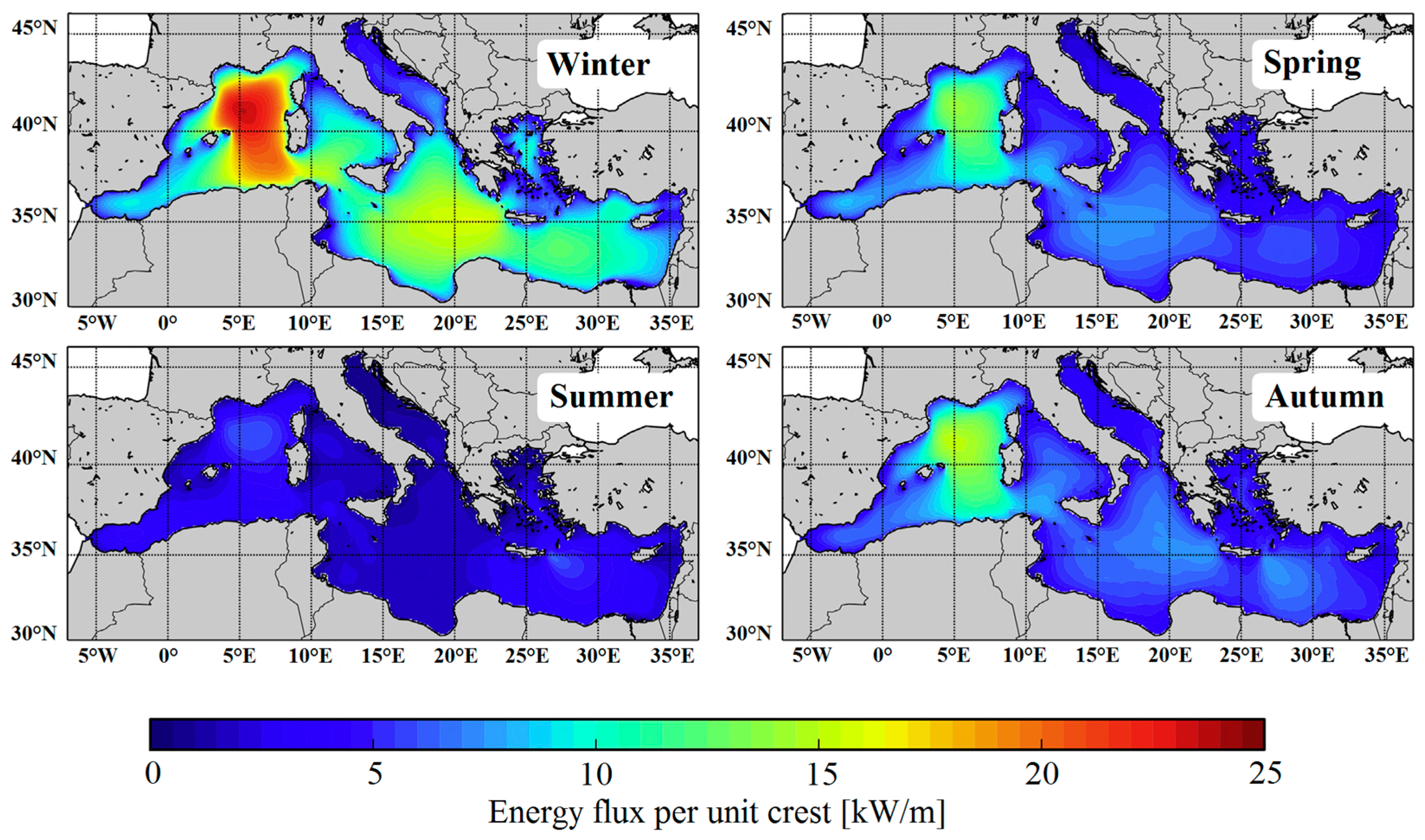
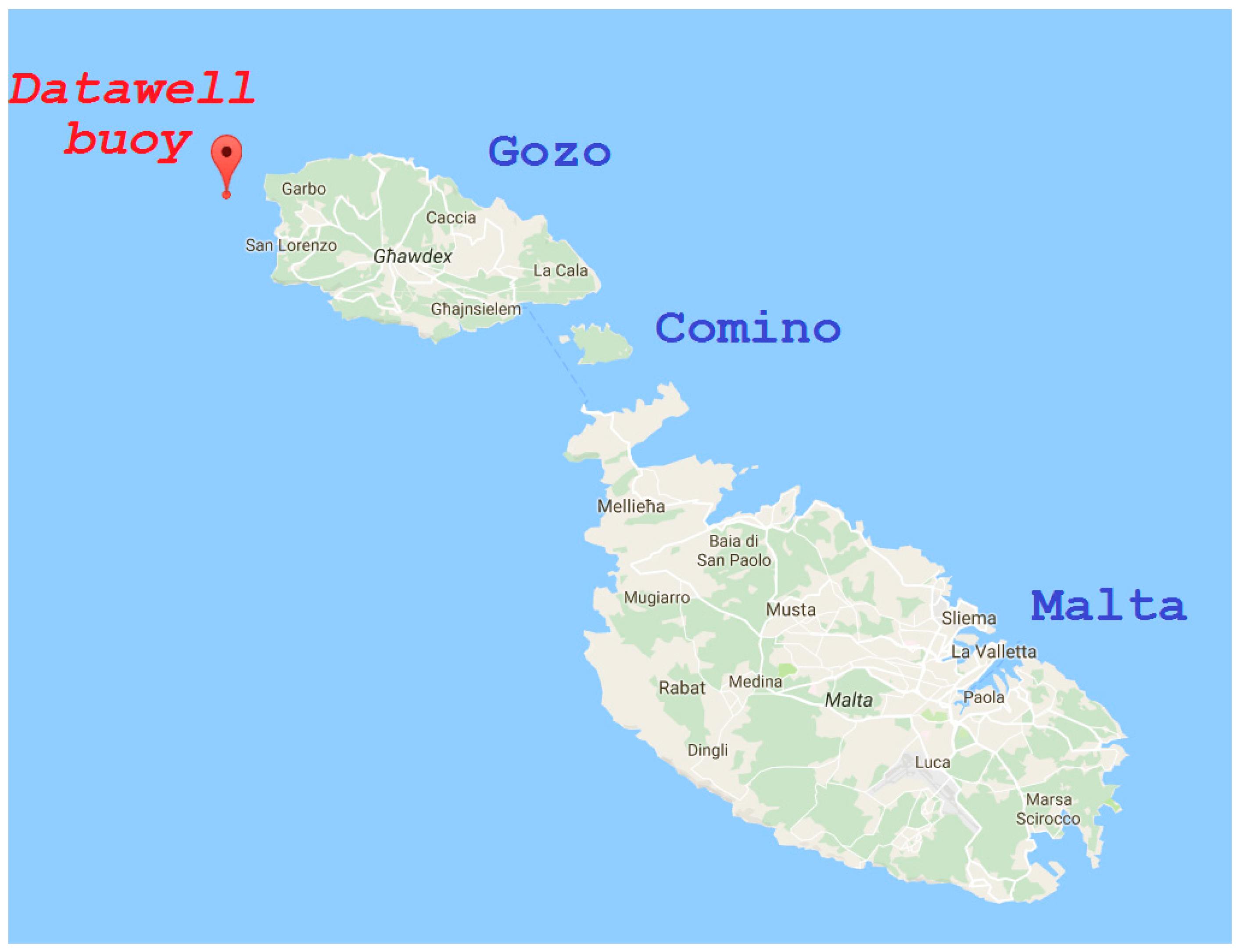
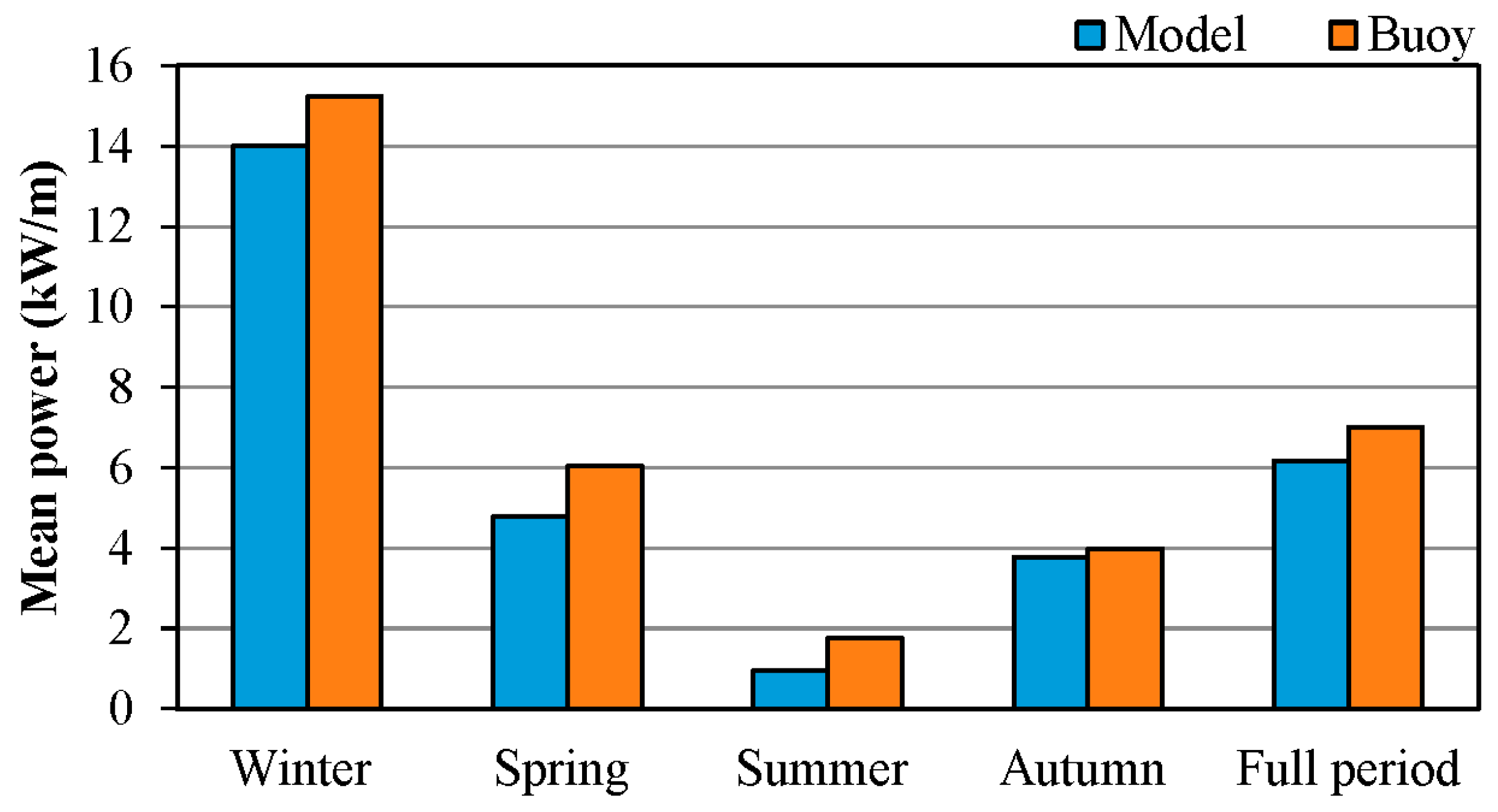
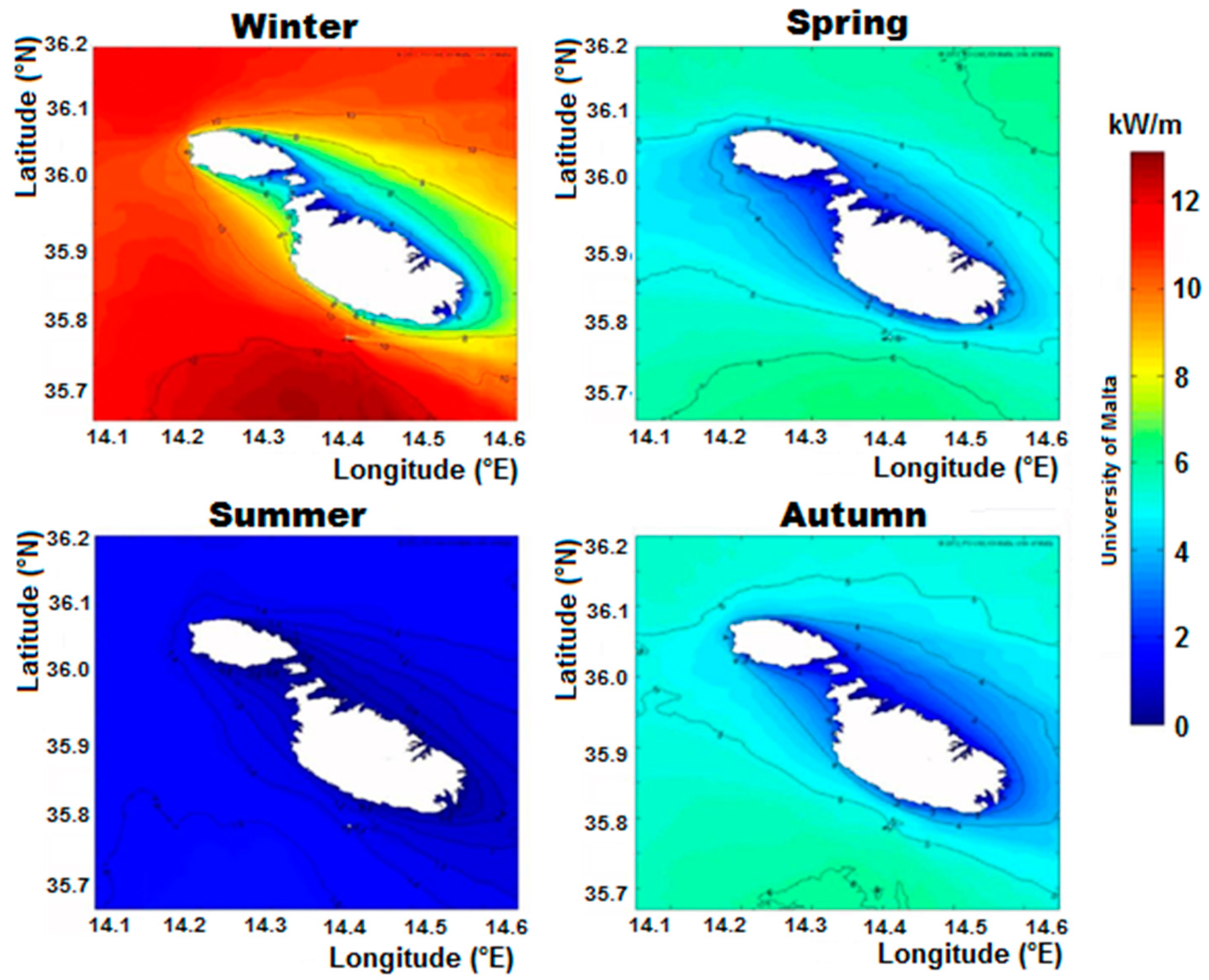
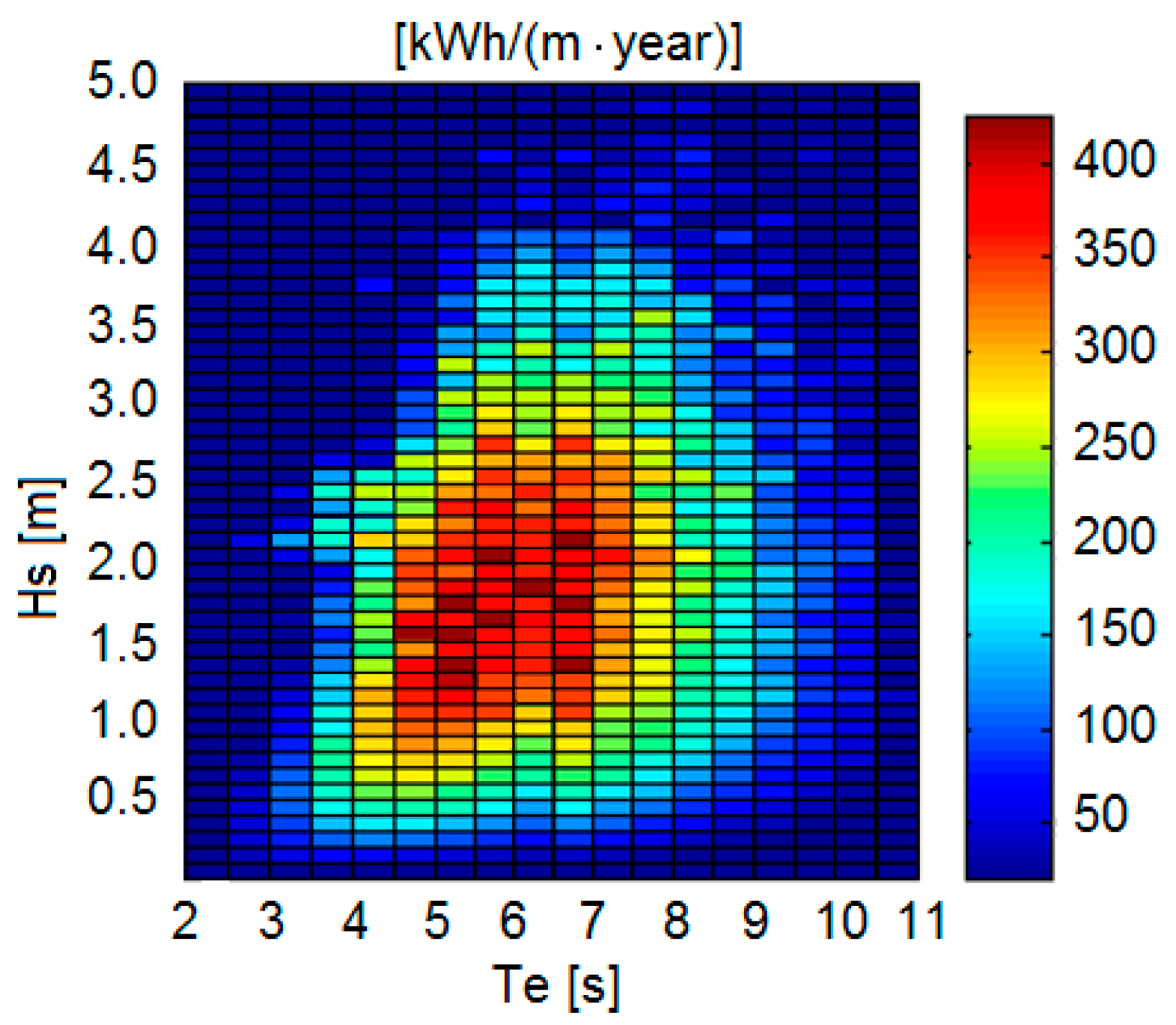
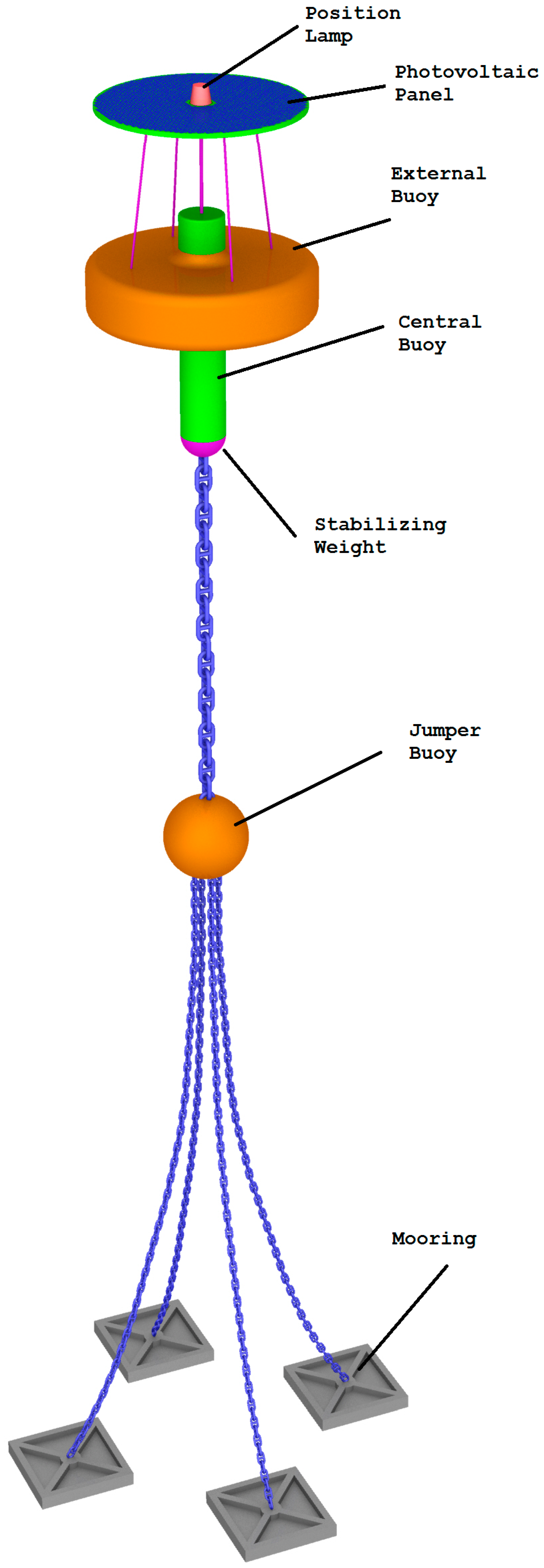
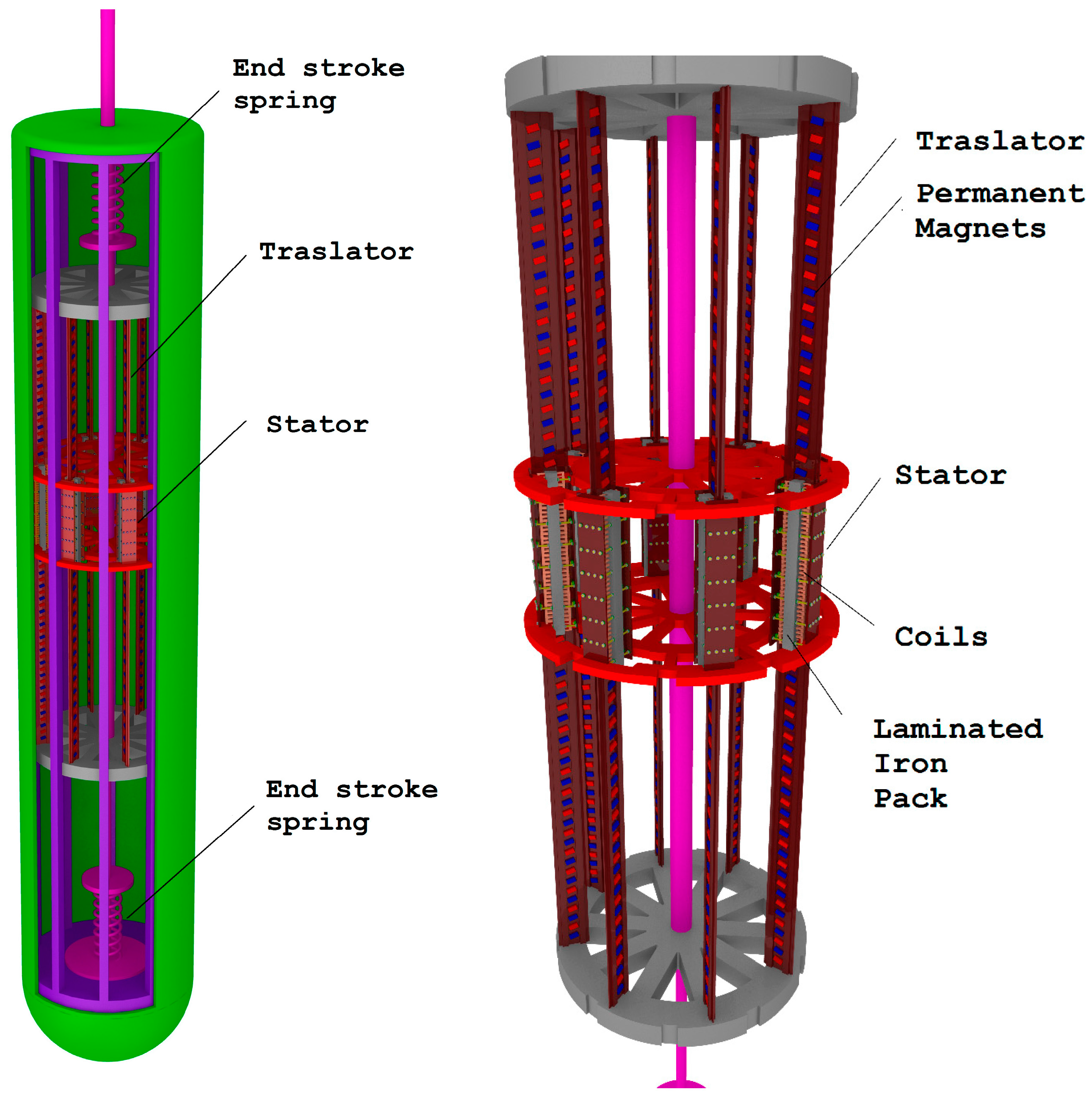
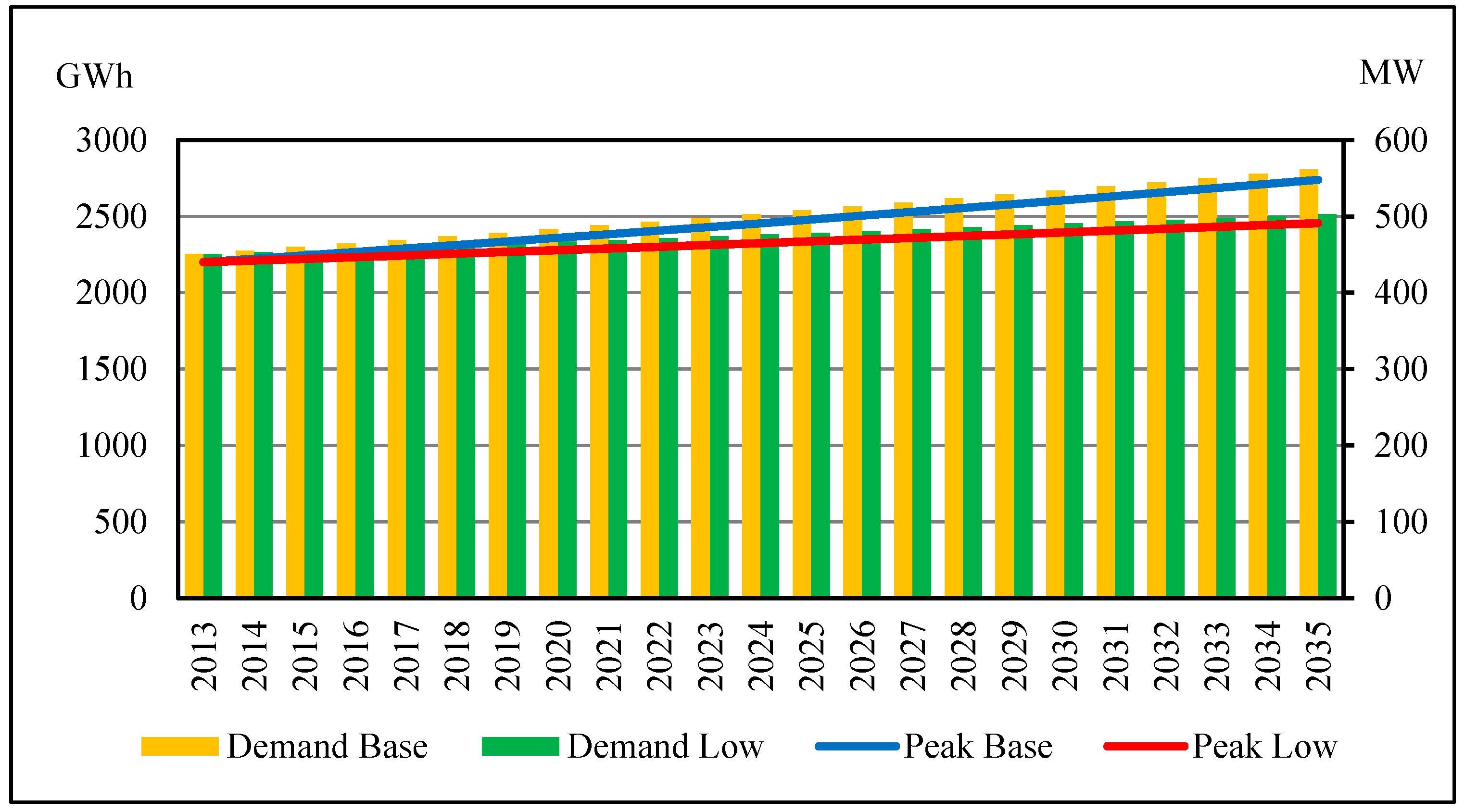
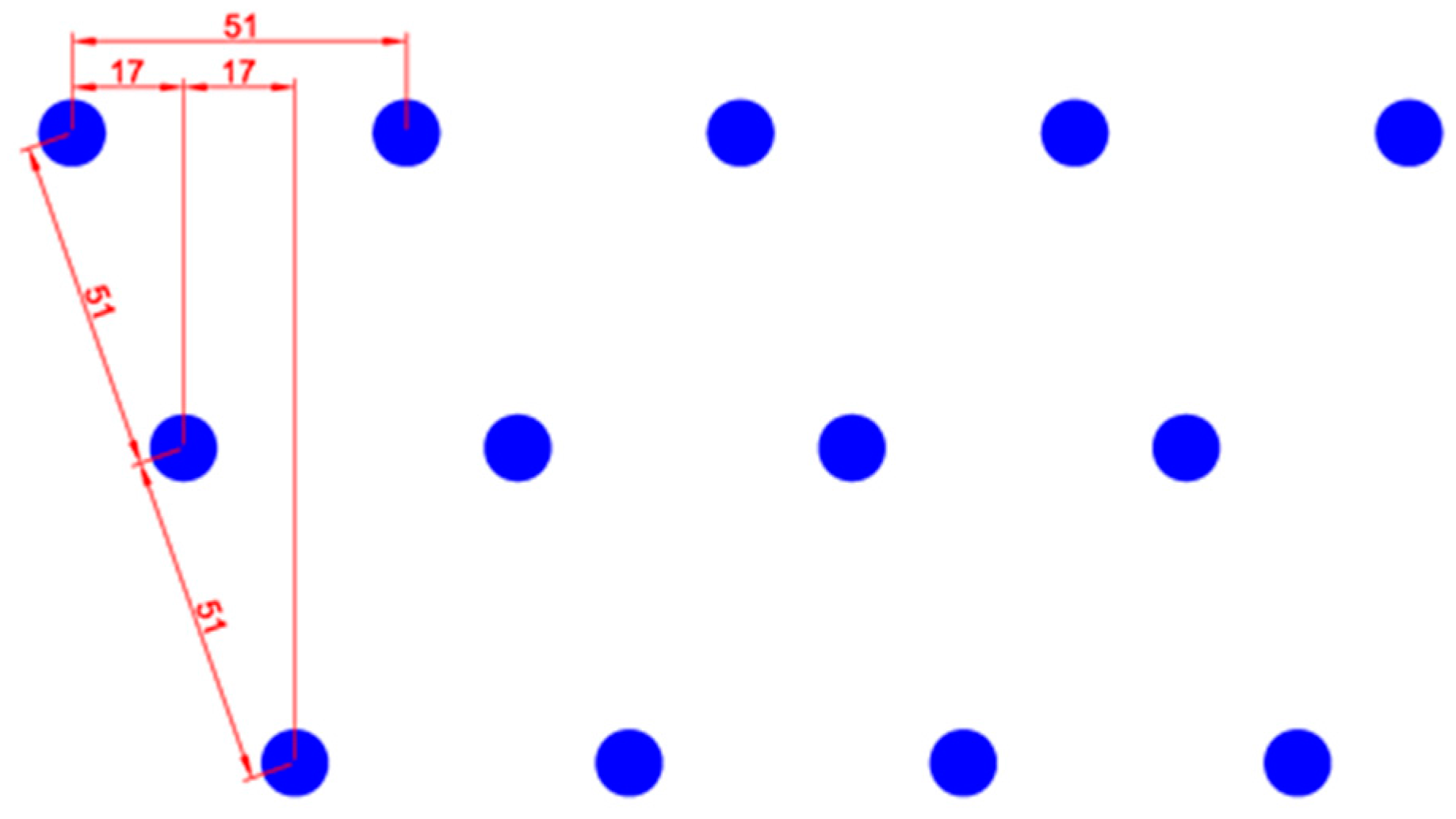
| Parameter | Symbol | Value | Unit |
|---|---|---|---|
| Buoy diameter | 10 | m | |
| Rated power of wave converter | 80 | kW | |
| Average overall energetic efficiency | 50 | % | |
| Average sea wave power flux | 5 | kW/m | |
| n. buoys in wave farm | 90 | - | |
| n. wave farms | 12 | - | |
| Overall installed power | 86.4 | MW | |
| Hours per year | 8760 | h/year | |
| Annual energy production | 236,520 | MWh/year |
| Jan. | Feb. | Mar. | Apr. | May | Jun. | |
| (kWh/m2) | 2.64 | 3.59 | 4.94 | 6.33 | 7.25 | 7.96 |
| (kWh/m2) | 81.84 | 100.52 | 153.14 | 189.9 | 224.75 | 238.8 |
| Jul. | Aug. | Sep. | Oct. | Nov. | Dec. | |
| (kWh/m2) | 8.06 | 7.18 | 5.67 | 4.15 | 2.79 | 2.29 |
| (kWh/m2) | 249.86 | 222.58 | 170.1 | 128.65 | 83.7 | 70.99 |
| Parameter | Symbol | Value | Unit |
|---|---|---|---|
| Annual solar radiation | 1915 | kWh/m2 | |
| Standard solar radiation | 1000 | W/m2 | |
| Panel Efficiency | 17% | % | |
| Panel surface per buoy | 52.12 | m2 | |
| Installed power | 9.6 | MWp | |
| Annual energy production | 18,325 | MWh/year |
| Parameter | Symbol | Value | Unit |
|---|---|---|---|
| Emission factor | 0.682 | t CO2/MWh | |
| Annual energy production by wave | 236,520 | MWh/year | |
| Annual energy production by PV | 18,325 | MWh/year | |
| Avoided CO2 by wave | 161,307 | t CO2/year | |
| Avoided CO2 by PV | 12,497 | t CO2/year | |
| Total Avoided CO2 | 254,844 | t CO2/year |
© 2016 by the authors; licensee MDPI, Basel, Switzerland. This article is an open access article distributed under the terms and conditions of the Creative Commons Attribution (CC-BY) license (http://creativecommons.org/licenses/by/4.0/).
Share and Cite
Franzitta, V.; Curto, D.; Milone, D.; Rao, D. Assessment of Renewable Sources for the Energy Consumption in Malta in the Mediterranean Sea. Energies 2016, 9, 1034. https://doi.org/10.3390/en9121034
Franzitta V, Curto D, Milone D, Rao D. Assessment of Renewable Sources for the Energy Consumption in Malta in the Mediterranean Sea. Energies. 2016; 9(12):1034. https://doi.org/10.3390/en9121034
Chicago/Turabian StyleFranzitta, Vincenzo, Domenico Curto, Daniele Milone, and Davide Rao. 2016. "Assessment of Renewable Sources for the Energy Consumption in Malta in the Mediterranean Sea" Energies 9, no. 12: 1034. https://doi.org/10.3390/en9121034
APA StyleFranzitta, V., Curto, D., Milone, D., & Rao, D. (2016). Assessment of Renewable Sources for the Energy Consumption in Malta in the Mediterranean Sea. Energies, 9(12), 1034. https://doi.org/10.3390/en9121034









